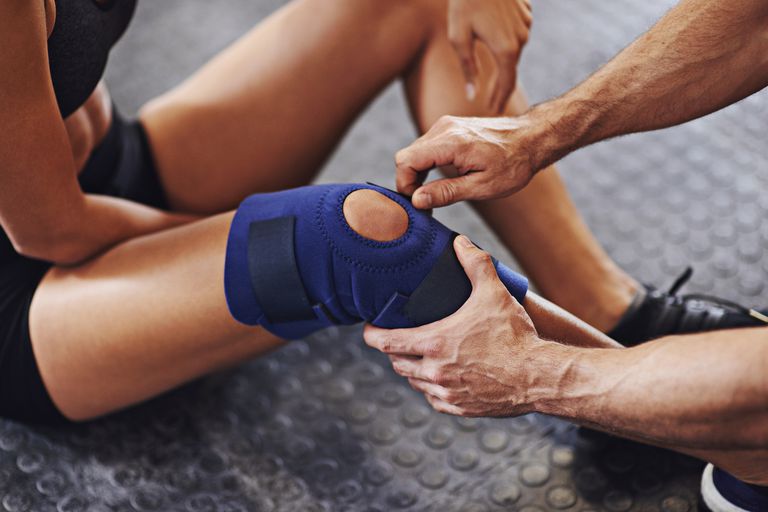The life of professional athletes isn’t easy. They have to participate in intensive exercises and training activities constantly to deliver maximum performance in front of an audience.
While these activities are crucial for athletes to stay in shape, they can also damage their body.
Sports medicine is a growing healthcare field dedicated for treatment of injuries related to sports and exercise like fractures, dislocations, sprains and strains, tendonitis, overtraining syndrome and degenerative diseases.
Besides injury treatment, it also focuses on helping the athletes improve their performance prevent future injuries.
Despite being a relatively new medical specialty, it has become essential for athletes thanks to its ability to address their specific needs and concerns.
Who is a Sports Medicine Doctor?
A sports medicine doctor is a licensed and trained individual who focuses on the diagnosis, treatment and prevention of injuries related to athletic activities.
These specialists treat their patients using physical therapy, orthopedic surgery, massage therapy, exercises, and other techniques so that they can return to their desired activity level quickly, safely and successfully.
They also teach the athletes on nutrition to help them maintain an optimal level of health and fitness and achieve their sports performance goals.
The sports medicine team includes sports physiotherapists, sports massage therapists, sports orthopaedic surgeons, sports podiatrists, athletic trainers, sports dieticians, exercise physiologists and sports biomechanists.
Common Sports Injuries:
Some common sports injuries athletes suffer on the filed include ankle sprain, groin pull, hamstring strain, knee injury, tennis elbow, Achilles tendinitis, concussion, shoulder injury, hip bursitis, quadriceps strain and shin splints.
They can also experience the exacerbation of pre-existing health problems like diabetes, asthma, allergies and arthritis.
Reasons to Visit a Sports Medicine Doctor:
There are many reasons for an athlete to see a sports physician.
Let’s take a look at some of them.
(1) Customized Care:
Sports medicine doctors are specially trained healthcare professionals who have an in-depth understanding of what could be the impacts of an exercise on their patient’s body. They collaborate with physical therapists and orthopedic surgeons to develop a customized treatment for their patient.
(2) Injury Prevention:
Sports physicians can provide the athletes with expert advice on the how to prevent injuries during the practice or play and how to reduce the likelihood of resurfacing a previous injury. They also conduct pre-participation physical exams of their patients to determine whether they are fit enough to resume sports activities.
(3) Pain Management:
Sports injuries may lead to several orthopedic issues that often cause chronic pain, making it difficult for the athletes to return to the game and carry out their activities.
While the primary aim of sports physicians is always to diagnose, treat and resolve the injury, they also use pain management therapies like electrical stimulation, spinal decompression, prescription medications and injected medications, to help their patients prevent or defer the need for surgery and continue their daily activities without any hindrance.
(4) Rehabilitation:
For an athlete, a return from an injury can be a complicated and lengthy process. If you find yourself sidelined by an injury, a sports physician can help you restore your movement and function and return to same or higher level of fitness quickly.
(5) Improving Athletic Performance:
Sports physicians diagnose and treat uncomfortable conditions to help you deliver your maximum performance, both on and off the field.
They also suggest you exercises and techniques to improve your strength and balance that contribute to your success as an athlete.
(6) Improving overall Fitness:
Sports physicians help athletes prevent muscle sprains, strains and tears to keep their bodies in shape.
They also conduct full body and musculoskeletal examinations to help them maintain their overall fitness.
(7) Non-Surgical Treatment:
Sports physicians try to avoid surgery in less severe cases and instead focus on treating injuries with non-surgical methods like physical therapy and acupuncture.
These treatments are often non-invasive and require shorter recovery time.
(8) State-of-the-Art Surgical Treatment:
In the cases where surgery is indispensable, sports physicians use advanced surgical procedures, like arthroscopic ACL repair, platelet-rich plasma (PRP) therapy, hip arthroscopy, stem cell therapy and rotator cuff repair to restore the function of injured areas.
(9) Education & Nutrition:
Sports medicine doctors teach you how to fuel your body properly to deliver greater performance consistency.They also focus on each athlete’s dietary needs depending on his/her general health and athletic goals.
(10) Rehabilitated Mobility:
Sports injuries can impair your mobility and flexibility, thus preventing you from conducting your athletic activities. Sports physicians help you restore function, increase strength and flexibility, improve range of motion, and prevent injuries from occurring.
(11) Improving Confidence:
An athlete fights with different type of injuries on the field that could make him/her self-conscious. Sports physicians address their specific needs, thus helping them regain their confidence and enjoy their game.




